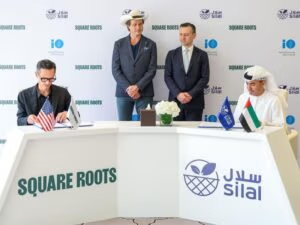According to the LSEG data, equity and equity-related issuance in the MENA region was $10.4 billion in the first nine months of 2025, a reduction of 51 percent of the issuance in the same period a year earlier.
The data indicated that although there was a drop in the total proceeds, the activity of the deal was strong, with transactions increasing 12 percent year-on-year.
First Abu Dhabi Bank was the best bookrunner and has a market share of 11.2 percent in the ECM underwriting league table, with HSBC coming second with 10.8 percent.
Citi reported that proceeds growth was 14 percent year-on-year, to $938 million, and is one of just two of the top ten bookrunners to achieve growth.
Managing Director and Head of MENA ECM of Citigroup, Rudy Saadi, stated that “This year has been exceptionally busy for us, and we still have at least one more deal expected to close before year-end. Based on current momentum and pipeline discussions, 2026 is expected to be even busier.”
IPOs represented 46 percent of all issuance, and follow-on offerings comprised 54 percent. It registered 36 IPOs, six more than in 2021, the fewest nine-month number since 2008, and raised $4.8 billion, a 4 percent fall short of 2024.
The best IPO was the Flynas, a Saudi low-fare airline that raised $1.1 billion in May, becoming the largest IPO in the region this year. Dar Al Majed Real Estate Co topped the list in Q3 with an amount of $335.8 million.
Follow-on sales amounted to $5.6 billion, as ADNOC Gas sold shares worth $2.8 billion in February and ACWA Power sold shares worth $1.9 billion in July.
The UAE was the highest in terms of volume of $5.22 billion, 58 percent higher than last year, and the Saudi Arabian volume was 74 percent lower at $4.49 billion.
Saadi said, “The UAE and Saudi Arabia remain core markets for us—and for any international or regional bank. These economies have the deepest capital pools, most liquid exchanges, and the most sophisticated investor base in the region. We’re also seeing growing interest across the wider GCC, which bodes well for Middle East equity capital markets.”
By sector, the energy and power industry was the largest producer with a figure of $3.5 billion and took 33 percent of the total proceeds, and then the industrials with 18 percent of the share.






